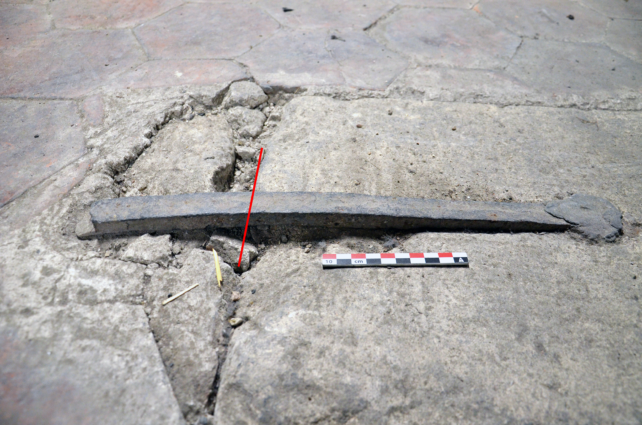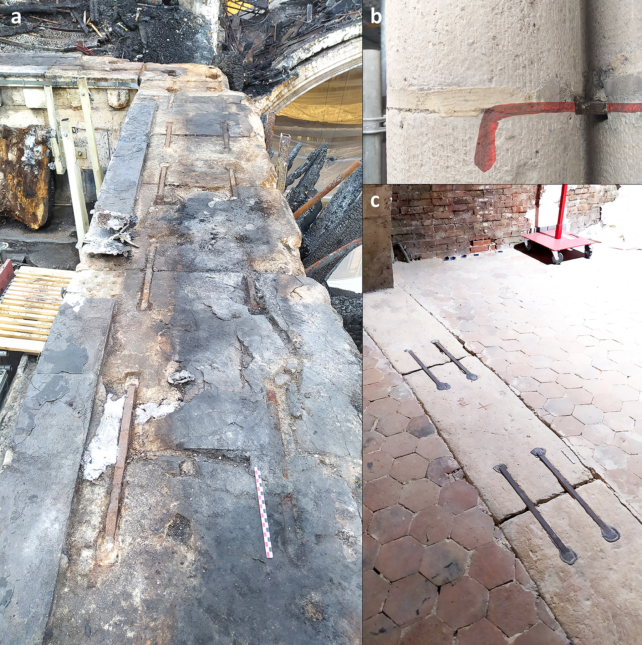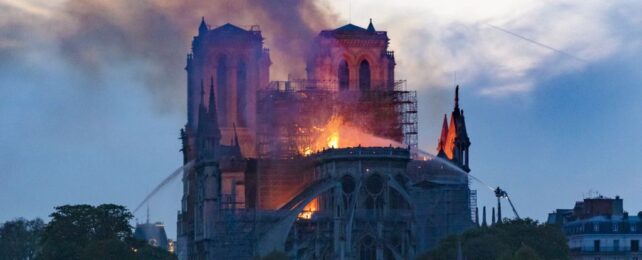For all the damage that the 2019 Notre Dame fire wrought, it presented archaeologists in Paris with a unique opportunity to peer into the landmark's history.
Parts of the famous cathedral that were concealed for centuries are now being picked apart and put back together, providing a window into the architectural innovations that once made this 32-meter-high (105 feet) building the tallest cathedral in its age.
That height, it turns out, is largely thanks to the iron that runs through the majestic structure's veins.
Archaeologists have uncovered thousands of metal staples in various parts of the cathedral, some dating back to the early 1160s.
The findings suggest the extensive use of iron in masonry is not as modern as experts once assumed. Medieval builders working on Notre Dame were employing the architectural technique long before restoration works started in the 19th century.
"Notre Dame is now unquestionably the first known Gothic cathedral where iron was massively used to bind stones as a proper construction material," archaeologists working in Paris conclude.

The team estimates that the iron fixtures found at Notre Dame were designed up to two decades before France's Soisson cathedral was built and four decades before the Bourges cathedral came to be. Until now, both these gothic buildings were considered the first examples of systemic iron masonry.
The architect that was initially in charge of Notre Dame's construction was clearly ahead of the game.
He appears to have used iron armatures liberally to bind stones together. These hardy staples have been found on the floor of the cathedral's tribunes and the curves of its many arches.
"This metal grid, installed during the first construction phases, should be interpreted as the innovative reinforcement of the cross-ribs of the outer ambulatory peaking at almost 11 m high, which had to be maintained without any internal support… ," researchers write.
"Whereas other buildings used wooden tie rods stretched between the arches… the first master builder of Notre-Dame de Paris made the bold choice of a system using a more durable material that could be more easily concealed."
The clever reinforcements clearly worked and seem to have been emulated by future architects, right through the 13th century, as addendums and improvements were made to the cathedral.
Metal detectors, for instance, revealed hundreds of metal staples used in the Notre Dame's nave, and while these could not be properly dated, they look different to the staples on the floor. Experts suspect they were the work of a later architect, who, according to historical documents, was probably hired between 1170 and 1190 CE.

This second architect most likely adopted the staple technique from the masonry master before him. And he probably passed on that knowledge to the next in charge.
A row of staples at the top of the building's lateral walls date to the early 13th century at the latest, which suggests the structures were erected after the framework of the building had already been laid down.
"This continuity in techniques, from the lower level of the tribunes, to the top of the building and probably involving at least three master masons over a 50-year timespan is striking in Notre-Dame," archaeologists write.
"Its master builders decided to employ forms known since Antiquity, such staples being for example extensively used in the Colosseum in Rome, in a novel implementation to serve an innovative architecture."
In the 19th century, several restoration campaigns began on the Notre Dame cathedral, and these, too, involved iron chains and tie-rods.
Conventionally, experts have assumed that iron armatures were only used during these more modern upgrades.
But the most recent restoration of the Notre Dame cathedral has apparently "shed new light on the beginnings of Gothic construction, leading to a better understanding of the master masons' thinking."
Possibly even more intriguing, a chemical analysis of the medieval staples suggests they came from multiple different sources and were commonly welded together.
It's possible that in the 12th century, there was a thriving market for new and recycled iron in the major medieval city. Indeed, historical documents suggest that iron imports were taxed in the 12th and 13th centuries.
As repair work continues on Notre Dame, researchers are hopeful to learn more about these impressive medieval builders and how they once sourced their materials and put them together all those centuries ago.
The study was published in PLOS One.
